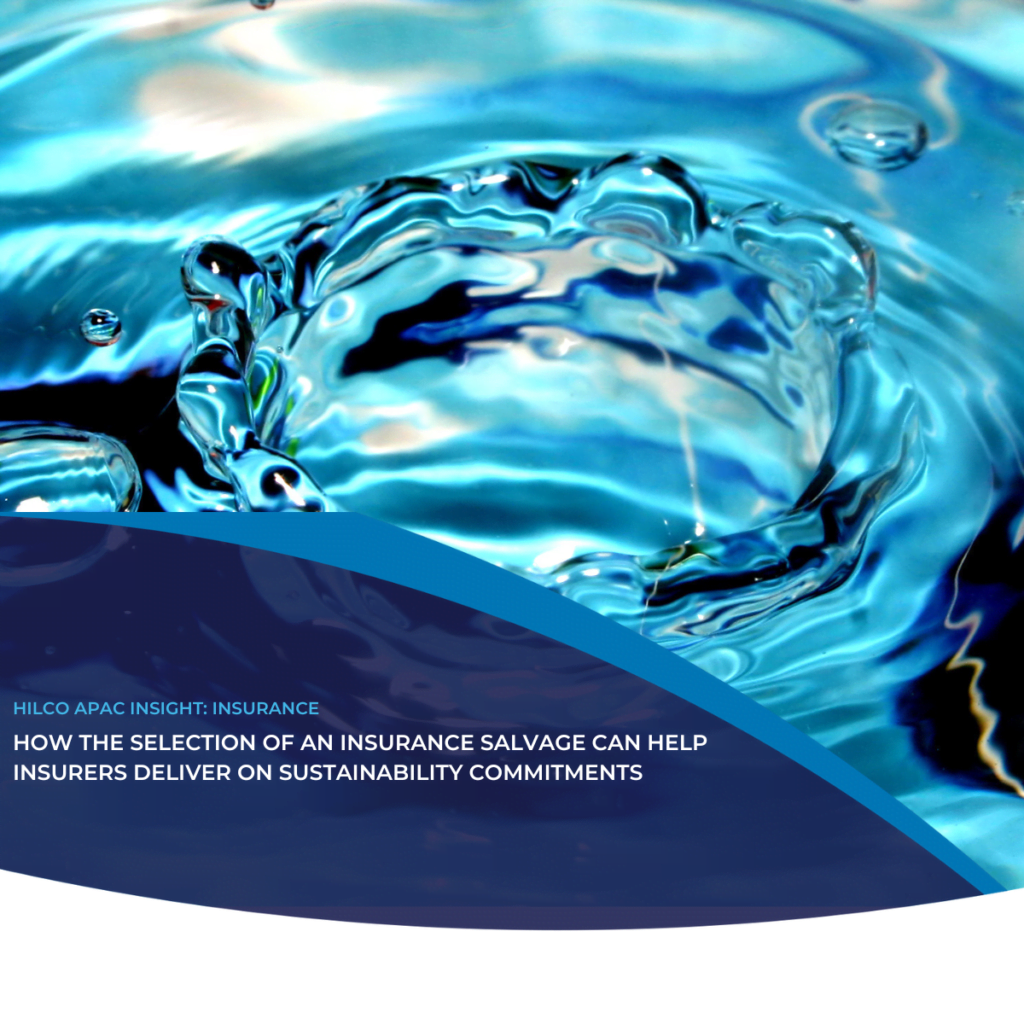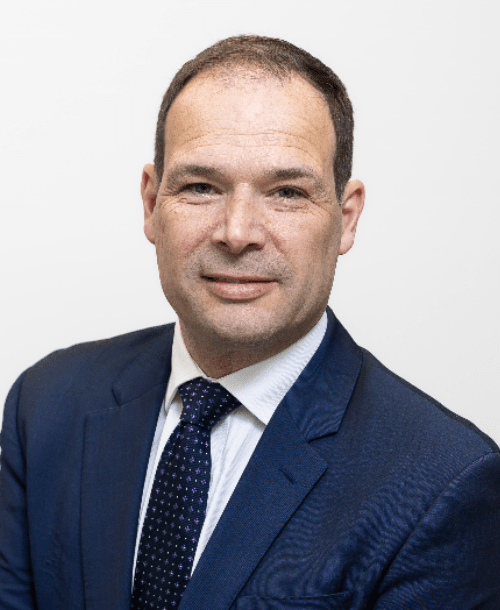


In 2012, the UN launched the Principles for Sustainable Insurance (PSI) as a global framework for the insurance industry to “address environmental, social and governance risks and opportunities”. In this article, we look at ways that insurance salvage practices can help support insurers’ commitments to those principles.
GEORGE ENDACOTT – DIRECTOR, SALVAGE
In 2012, the UN launched the Principles for Sustainable Insurance (PSI) as a global framework for the insurance industry to “address environmental, social and governance risks and opportunities”. In recent times, the insurance industry has seen the increasing momentum in interest and commitments insurance companies are making regarding Environmental Social & Governance (ESG). The trend has risen sharply on the back of the climate conferences such as COP26 and the release of ICA’s Climate Change Roadmap in late 2022. According to recent estimates, almost $40 billion insurance claims are paid out each year across Australia, so managing the risk of items going to landfill is becoming an agenda item which we believe will gain momentum and importance.
In recent times, the insurance industry has seen the increasing momentum in interest and commitments insurance companies are making regarding Environmental Social & Governance (ESG). The trend has risen sharply on the back of the climate conferences such as COP26 and the release of ICA’s Climate Change Roadmap in late 2022.
According to recent estimates, almost $40 billion insurance claims are paid out each year across Australia. Managing the risk of items going to landfill is becoming an agenda item that will gain momentum and importance.
Sustainable insurance is a strategic approach where all activities in the insurance value chain are done in a responsible and forward-looking way by identifying, assessing, managing and monitoring risks and opportunities associated with environmental, social and governance issues. In our discussions with insurance clients, there is one thing we hear often; a recognition that ESG is not a compliance activity; the need to make permeable changes to the risks faced by society, creating transformative outcomes through a series of small, practical steps is becoming an expectation. We expect to see more interrogation of insurers and their practices in the future by customers and other stakeholders.
With S&P reporting that more than 80% of its ESG ratings are neutral, is it a matter of making some incremental but meaningful steps at a grass roots level to start to effect change?
According to Statista, the global market for insurance salvage and reinsurance in 2017 was worth $33.2 billion USD, with this figure expected to grow by 5% annually until 2030. As such, it’s important that insurers are able to select the best possible solutions for their clients’ needs and commitments—in both technical and non-technical areas. Salvage presents a tangible opportunity to embed sustainable practices into the insurance claim process.
Environmental, social and governance risk factors are increasingly being considered as part of the selection process for potential salvage partners.
Research has shown that businesses are increasingly looking to incorporate ESG into their procurement practices in selecting and managing partners. In a recent survey by PwC, 82% of respondents said they were integrating ESG into their supply chain risk management strategy, while 81% said they were incorporating ESG into their supply chain due diligence. Michael Hayes, COO of Hilco APAC has seen this many times over the 35 years as an insurance salvage specialist.
“I’ve seen insurers tell me that the path to market is onerous or simply don’t know where to start when assessing salvage as a vehicle to recover claim costs. A salvage partner that knows insurance, has multiple paths to market, and can navigate the secondary market with ease simply takes that concern away.
I believe there is a re-market channel for just about everything, and we can avoid the disastrous impacts on landfill simply by asking the question – can you find me a path to market for this?”
Hilco is regularly asked to present sustainable solutions for salvage; this doesn’t present any concerns for the team, having been advocates of the circular economy now for over 30 years, carving out a specialty in keeping assets in utility. Renewed, repurposed and reimagined uses for assets delivers millions of dollars back to clients to offset write offs, overheads and fund new ventures.
Brokers, MGAs and insurance companies can all use the circular economy as part of the ESG process. By recycling more assets, claims can be much,” greener”, which not only offers cost savings, but less reliance on fragile global supply chains on new parts, plus the feelgood factor of ticking the sustainability box.
In an environment where traditional salvage decision making is driven by financial models only, there is an immediate opportunity to seek partnership with service partners that embed sustainable practices in their model in delivering that financial result.
“For us its about how to navigate remarketing with expertise and a passion for sustainability. One of my clients recently had a complex retail stock claim which was deemed a total loss. In navigating the branding, distribution and quality hurdles in front of them the decision was almost made to dispose of the assets in entirety. We were able uplift the stock, de-badge the sensitive items, find secondary channels for remarketing that would not impact sales for the retailer and return a loss recovery financial result for the insurer sustainably and with minimal waste”
Management of environmental, social and governance risks are a part of the insurance salvage industry and selecting a salvage partner that specialises in sustainable solutions is a way to demonstrate the kinds of incremental steps that embeds in decision-making environment, social and governance issues. Considered salvage practices, looking at circularity over traditional linear supply chain thinking can act as a integrator of ESG into the insurance value chain.


Hilco Global APAC offer insurance salvage solutions to clients in the Australia Pacific region. Our experience and know-how of the end to end salvage process provides Insurers and Loss Adjusters with confidence in dealing with a trusted partner. We take care of logistics, asset preparation, safety & technical testing as well as the remarketing campaigns from end -to-end, reducing the burden of salvage activities and claims costs where possible.
Are you an insurance professional seeking experience, agility and solution-focus in salvage? Contact our team today.

George has developed a career spanning over 20 years in Sales and Relationship management in the financial services industry, in particular within general insurance. With roles across client services and business development, George has built an impressive network of contacts within the Loss Adjusting, insurance claims, brokerage and building consultancy community. George has worked for Sedgwick in Australia for almost 10 years, niching in claims services (Loss Adjusting), Building consultancy and strata services to Australian Insurers. George holds a Bachelor of Business (Marketing ) degree and a Certificate IV in General Insurance through ANZIIF.


Michael is a director and founding shareholder of Hilco APAC. With over 25 years experience, he is a go-to person in auction and salvage disposal.
Mike has continued to work hard for retailers and insurance professionals, having the ability to see possibility in even the most bespoke asset classes.
Michael saw a gap in the market to provide a truly global offering across valuation, advisory and monetisation, leading to the formation of Hilco Global APAC.


Michael has over seven years of experience in the auction industry where has managed client sale programs from a range of different sectors.
Michael runs the frontline for customer support at Hilco Global APAC, builds and maintains client relationships, troubleshoots curly questions and assists in the development of large contract and tender solutions.
